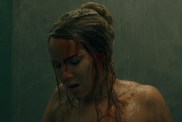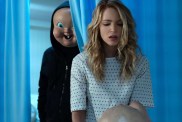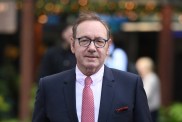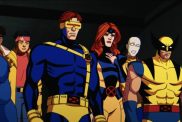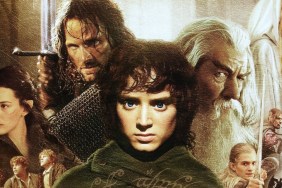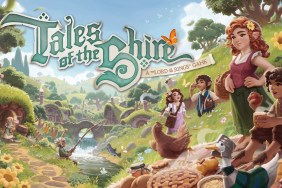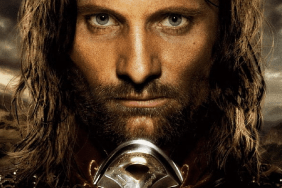Cast:
Martin Freeman as Bilbo
Ian McKellen as Gandalf
Richard Armitage as Thorin
Ken Stott as Balin
Graham McTavish as Dwalin
William Kircher as Bifur / Tom Troll
James Nesbitt as Bofur
Stephen Hunter as Bombur
Dean O’Gorman as Fili
Aidan Turner as Kili
John Callen as Oin
Peter Hambleton as Gloin / William Troll
Jed Brophy as Nori
Mark Hadlow as Dori / Bert Troll
Adam Brown as Ori
Ian Holm as Old Bilbo
Elijah Wood as Frodo
Hugo Weaving as Elrond
Cate Blanchett as Galadriel
Christopher Lee as Saruman
Andy Serkis as Gollum
Sylvester McCoy as Radagast
Barry Humphries as Great Goblin
Jeffrey Thomas as Thror
Michael Mizrahi as Thrain
Lee Pace as Thranduil
Manu Bennett as Azog
Conan Stevens as Bolg
John Rawls as Yazneg
Stephen Ure as Fimbul / Grinnah
Timothy Bartlett as Master Worrywort
Bret McKenzie as Lindir
Benedict Cumberbatch as Necromancer
Directed by Peter Jackson
Story:
Sixty years before the events in “The Lord of the Rings,” a hobbit named Bilbo Baggins (Martin Freeman) is approached by Gandalf the Grey (Ian McKellen) to go on a journey with 12 dwarves who are returning to the Lonely Mountain to reclaim their home after being displaced by a dragon named Smaug. Leading the dwarves is their former king Thorin Oakenshield (Richard Armitage) who is hesitant about the hobbit’s presence as the group encounters one perilous obstacle after another.
Analysis:
It almost feels mandatory to preface this review with the caveat that this writer has seen the original “Lord of the Rings” between three and four times in theaters, at least twice more on DVD, and countless times on cable and television, so few people wanted to love Peter Jackson’s return to Middle-earth with “The Hobbit: An Unexpected Journey” more than this reviewer. This new trilogy is meant to be a prequel to the “Lord of the Rings” trilogy, introducing many of the characters and elements, such as the actual ring that was at the center of that journey.
The film opens with a similarly expository introduction as the one that opened “Fellowship of the Ring,” telling the story of how the dwarves were driven out of their mountain home Erebor by the dragon Smaug after finding the Arkenstone. Their dispossessed king Thorin Oakenshield wandered the earth swearing to one day get back their home and all the treasure stolen by Smaug.
We then jump forward in time to an older Bilbo Baggins (Ian Holm) in his Hobbiton home, writing the story of a journey made decades earlier while his young nephew Frodo (Elijah Wood) plans for the arrival of the wizard Gandalf. As you may have guessed, this is taking place shortly before the opening of “Fellowship of the Ring” but we then travel back in time to the same location where a younger Bilbo (Martin Freeman) encounters Gandalf. Later that evening, Gandalf brings a dozen dwarves to Bilbo’s Bagend home and convince him to go on a journey to sneak into Erebor to destroy Smaug.
If you’ve read the book, you already know the general story and Jackson and his fellow writers follow the general structure of Tolkien’s book, while bringing in a couple extra characters and expanding many of the scenes beyond the simplicity of Tolkien’s original story with additional dialogue. There are certainly a lot of dwarves and other than the fat one and the old one, it’s hard to tell them apart, but one of the constant saving graces of the film is Ian McKellen’s Gandalf, who is just as genuinely wonderful as always. When the party arrives in Rivendell, we even get to catch up with three old “friends”: Hugo Weaving’s Elrond, Cate Blanchett’s Galadriel and Christopher Lee’s Saruman (before he went bad).
It quickly becomes apparent how hard Jackson is trying to recreate the magic of “Fellowship of the Ring” by using many of the familiar elements and an identical story structure. Over the course of their journey, the group face more orcs and goblins and trolls we saw in the “Lord of the Rings” movies with many of the beats being almost identical. The only creatures that really stand as being original to this movie are a trio of mountain-sized storm giants, and over the course of two hours, Bilbo tends to fade into the background, lost in the mass of dwarves.
Barely mentioned in the original novel, Jackson also gives a larger part to Radagast the Brown, played by former “Doctor Who” Sylvester McCoy, an eccentric character who communicates with animals, and this is where the movie starts to get problematic, both in terms of tone and the CG, particularly the rabbit-driven sleigh driven by Radagast. These lighter moments seem sillier as if Jackson is trying to appeal to a younger audience, which does make some sense since Tolkien’s earlier book was far friendlier towards younger kids.
The movie’s biggest hurdle and the one that’s hardest to get past is the decision to shoot the movie in 3D at a higher frame rate of 48 frames per second, twice the normal speed. It’s an interesting experiment that makes everything look crisp and clear and in some ways it makes everything look real and present, which would generally help the 3D. This cinematography greatly enhances the picturesque New Zealand landscapes that played such a large part in the scale of the earlier trilogy, but at the same time, the characters walking across those landscapes look like bad CG.
This problem is first noticeable when we meet the dwarves that storm Bilbo’s pad in Bagend, raiding his pantry for food, the added clarity making their hair and make-up look fake and not much better than the dwarves in either of this year’s Snow White movies. Even worse are some of the later creatures who at best look like they were created by the Jim Henson Workshop, the worst of them being the goblin king that could very well be a descendant of Jabba the Hut.
Andy Serkis’s lovable bone-thin Gollum shows up over ninety minutes into the movie for possibly one of the film’s strongest sequences as Bilbo gets separated from the group, and this is easily the most memorable scene because oddly enough, the all CG Gollum does look decent. That can’t be said for a character from Tolkien’s books that plays a larger part in this adaptation, the large scarred orc named Azog the Desecrator (Manu Bennett), a recurring antagonist from Thorin’s past who keeps showing up, building to a climactic battle later on.
So many great movies have been made with 3D from “Avatar” to “Hugo” to this year’s “The Life of Pi” and one would think that a visually-driven filmmaker Jackson would make the most out of it, but this decision to film at a higher frame rate really ruins the movie. You do adjust to it eventually, but almost every scene requires some sort of adjustment and the human brain can’t do that and escape into a fantasy world at the same time. It doesn’t help that the movie’s following so many great visual FX coups like “The Avengers” and the “Dark Knight Trilogy” but the 3D is a waste and the results of the 48 fps are so distracting that it practically ruins the film. Mind you, this is coming from someone who is a big proponent of 3D, both filmed and in some cases converted, but “The Hobbit” is clearly a film that would have benefitted greatly from the magical fairy dust of film. We recommend avoiding the 48 fps experiment if at all possible.
For the most part, the writing and storytelling are there, but the visual decisions make it hard to appreciate any of it especially during the action sequences with some of the long shots looking like they’re clunky models. It’s almost as if no one involved with making the movie put it up on a screen to see how anything might look, because that’s the only reason why so much of the movie could look so very, very bad.
The Bottom Line:
Offering very little we haven’t already seen and a horrible decision to use a frame rate that makes much of it unwatchable, this is less a faithful adaptation of Tolkien’s “The Hobbit” as much as Jackson trying to recapture the magic of the “Lord of the Rings” movies and failing miserably. In other words “An Unexpected Journey” may as well be “The Phantom Menace” and God help us all if the next two movies aren’t better than this one.

